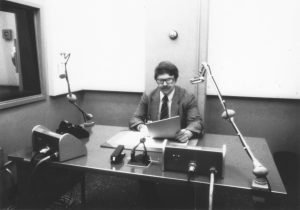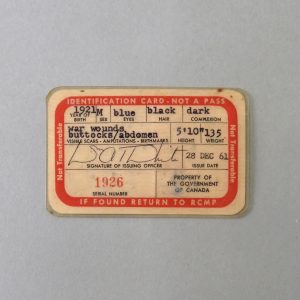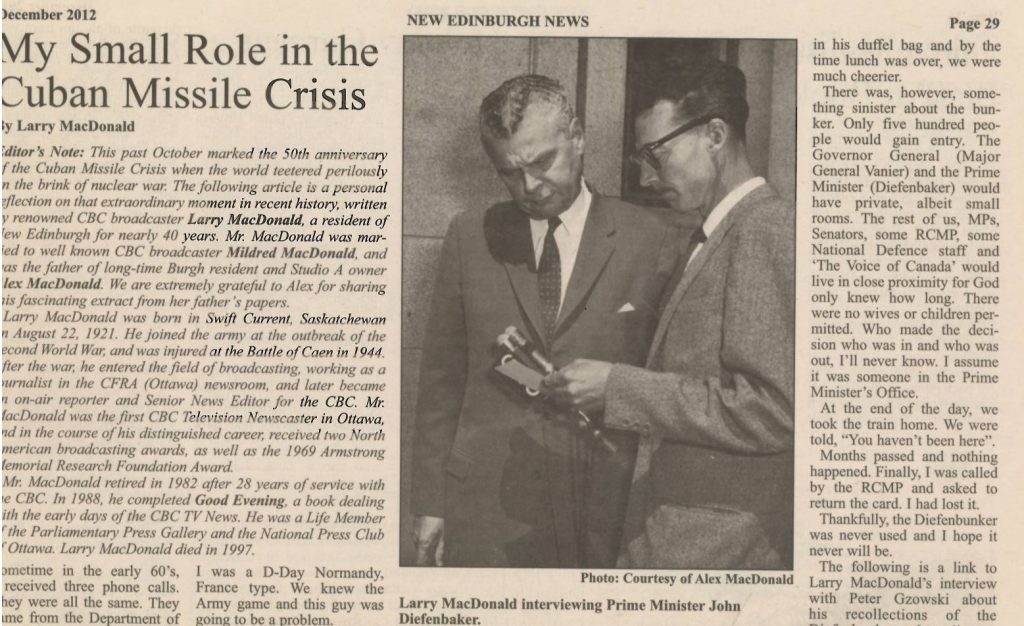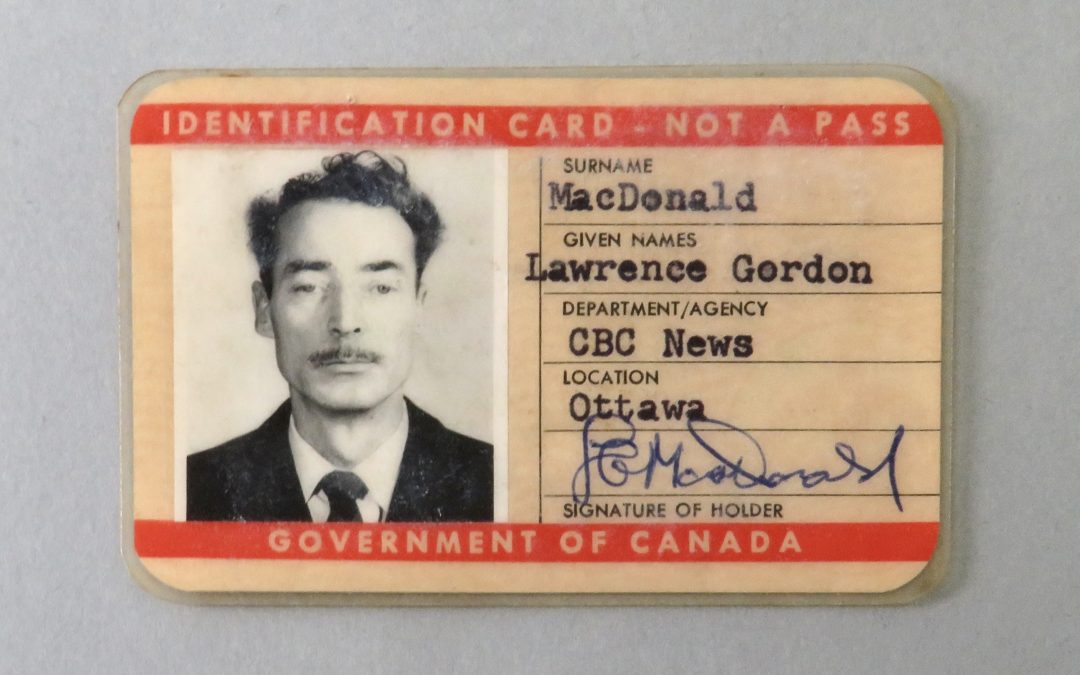(11/25)
In honour of the Diefenbunker’s 25th anniversary, we continue to highlight 25 artifacts from within our collections. This week, we are featuring a Government of Canada identification card issued to the late Lawrence MacDonald.

A man in the Diefenbunker’s CBC Radio Room.
Born in Swift Current, Saskatchewan, Lawrence MacDonald, commonly referred to as Larry, joined the Canadian Army at the outbreak of the Second World War. He served for nearly five years and was wounded at the Falaise Gap — a decisive engagement of the Battle of Normandy which resulted in the encirclement of German Army Group B by American forces from the south and British, Canadian, and Polish forces from the north. Following this, MacDonald exited the army and he, alongside Norman Depoe and Tom Earle, went on to become one of three Canadian Broadcasting Corporation (CBC) reporters designated to be the “Voice of Canada.” This designation allowed him to be in the Diefenbunker to broadcast advice, instructions, and messaging communicated via the Canadian Emergency Broadcasting System in the event of a nuclear war. These radio broadcasts would reach CBC frequencies across the country and would have been broadcasted from the Diefenbunker’s CBC Radio Room if a nuclear attack on Canada was detected during the Cold War.

Identification Card – Lawrence MacDonald, Diefenbunker Museum: 2002A.002.001
This ID card from the Diefenbunker’s collections was issued to Lawrence MacDonald by the Government of Canada on December 28, 1961, the same year the Diefenbunker became operational. The card is rectangular, light brown with a red border, and composed of laminated paper. The front of the card displays a black and white identification photo on the left and information in descending order on the right, including last, first, and middle name, department/agency and location of employment, and a signature of the cardholder. The back of the card contains information including physical characteristics of the cardholder, a serial number of the ID card, the issuing officer’s signature and the date issued, and text in the bottom red border that reads “IF FOUND RETURN TO RCMP.”
Following his service in the Canadian Army, MacDonald went on to become the winner of two North American broadcast awards. He received the Canadian National Award from The Radio and Television News Directors Association of Canada for The Liberation of the Netherlands by Canadian Troops. He also received an honorable mention from the same organization for Dieppe, A Place to Remember. In addition to this, MacDonald won another award in 1969 from the prestigious Armstrong Memorial Research Foundation for his broadcast D-Day, Twenty-Five Years Later. As a “Voice of Canada,” MacDonald’s stories have appeared in major news outlets including, The Globe and Mail, Ottawa Citizen, Montreal Gazette, and Reader’s Digest. In 1982, MacDonald retired from CBC TV News after twenty-eight years as an on-air reporter and senior news editor.
After his retirement, MacDonald completed a memoir detailing the early days of CBC TV News, with mentions of Bugs Bunny, Daffy Duck, and the Marx Brothers. He also held seminars on creative writing at Algonquin College and was part of a team of educators and editors who consulted on the 1990 edition of the Penguin Canadian Dictionary. MacDonald was also a life member of the Parliamentary Press Gallery and The National Press Club of Canada. Through his work with CBC and as a “Voice of Canada”, MacDonald played an important role in keeping Canadians informed during a critical time in recent world history.

Lawrence MacDonald Article, Diefenbunker Museum: 2022A.002.002
Stay tuned as we continue to celebrate our 25th anniversary by uncovering stories from our museum’s collections.
